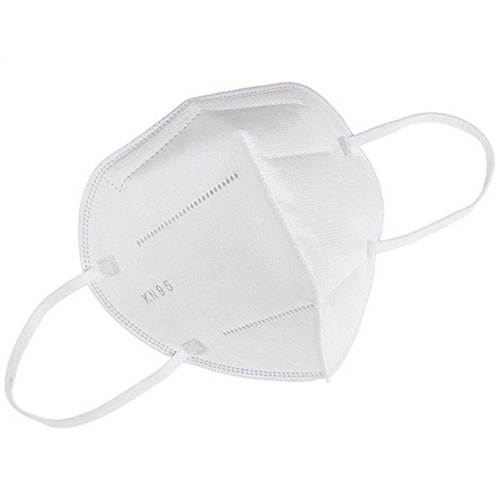Wearing a protective face mask or some form of facial covering is a crucial step in preventing the continuous spread of COVID-19. One of the easiest and most effective steps you as an individual can take is to wear a facial covering when out in public. In fact, many cities are now mandating the use of face masks in all public places.
Studies show that there are two important reasons for wearing a mask. Facial coverings provide some protection for the wearer but more importantly, they prevent the wearer from spreading the virus to others. Because COVID-19 has shown to be most easily spread before an infected individual begins to show symptoms, it is crucial that masks become a daily necessity even if you are not showing any symptoms to help reduce the spread of the virus.
There are a few different protective face mask options making it difficult to know which mask is right for you. Before we dive into the specifics about each protective face mask, let’s first outline your mask options we’ll be going over:
- 3 Ply Disposable Protective Face Masks
- KN95 Face Mask Disposable Protective Face Masks
- Cloth Reusable Face Masks or Covering
Because the World Health Organization has recommended that individuals not seek out medical grade face masks or respirator masks such as the US N95 as to not disrupt supply for official medical practitioners, we will only be focusing on consumer grade face masks for the purpose of this article.
Now that we have a better idea of the protective face equipment we’ll be focusing on, let’s take a deeper dive and learn more about each type of mask so you can have a better understanding which mask is the best fit for you.
3 Ply Face Mask or Surgical Mask

3 Ply Face Masks are a great option for everyday use for adults and most children. They are designed to provide 3 layers of protection against bacteria, viruses, and other large droplets or bodily fluids while also being comfortable to wear and breathable.
3 Ply Face Masks are able to help prevent the wearer from being exposed to airborne pollutants, allergens, bacteria, and viruses while also protecting those nearby from the wearer’s coughs and sneezing with up to 95% efficiency when worn properly. While they do tend to be looser fitting, most 3 Ply face masks come with a flexible nose bridge for an option of a tighter fit. However, they can sometimes allow leakage to occur around the edges when the wearer inhales.
Properly worn 3 Ply masks can protect very well against particles 3.0 microns or larger with up to a 95% Bacterial Filtration Efficiency.
Overall, 3 Ply masks are a great option for facial coverings. We recommended the using the 3 Ply protective face masks for use on everyday errands such as trips to the grocery store, pharmacy, post office, or when in public areas where others are in close proximity.
Certain 3 Ply Mask are also approved for Medical Use. There are three levels of protection - Level I, Level II or Level III. Level 1 surgical mask is appropriate for general use. Level II is commonly referred to as a Dental Mask and offers additional protection from liquid splatter and Level III which provides maximum protection from liquid exposure. All three levels offer similar protection from airborne particles.
KN95 Face Mask

The KN95 masks offer 5 layers of superior protection and are comparable to the US standard N95 face masks. They are European FFP2 certified, and protect against 95% of large and small airborne particles including aerosols and large fluid droplets including bacteria and viruses. Designed with a comfortable ear loop and a moldable nose bridge they offer a tighter, more secure fit for optimal protection for both yourself and others in close contact.
The KN95 face masks are breathable and ideal to be worn for everyday errands or in any public area where you may find yourself in close contact with others. Additionally, they are highly effective at protecting the wearer from pollen and other animal allergens.
Properly worn KN95 face masks can protect very well against PM10, PM2.5, and smaller particles with up to a 95% Bacterial Filtration Efficiency.
Overall, KN95 face masks are an excellent choice to wear when out in public to help protect yourself and others from getting sick as they provide a tighter fit around the nose and face.
Cloth Face Mask
Cloth masks have become a very convenient option during the COVID-19 outbreak. You can find options in all colors and patterns to match your personal style. However, while cloth masks can help in protecting the user from spreading a virus or bacteria to others, they do not provide the wearer much protection from others due to their loose fit.
Cloth face masks do provide one upside to disposable 3 Ply and KN95 masks in that they are washable and can be worn multiple times. It is important, however, to be aware of where and how your cloth mask was made as many homemade masks may not be as effective as the 3 Ply or KN95 face masks at preventing the spread of disease. Infact, many cloth masks that users are turning to were not designed to protect against bacteria and viruses at all.
While wearing a cloth mask is absolutely better than no mask at all, they tend to leave much more open space allowing for leakage when the wearer both inhales and exhales therefore lessening their effectiveness at preventing the spread of COVID 19.
KN95 vs Surgical Mask - Which is Better
Take a look at the breakdown of each Protective Face Mask:

www.safepro.co.za
medical surgi masks is a 3ply mask with earloops

